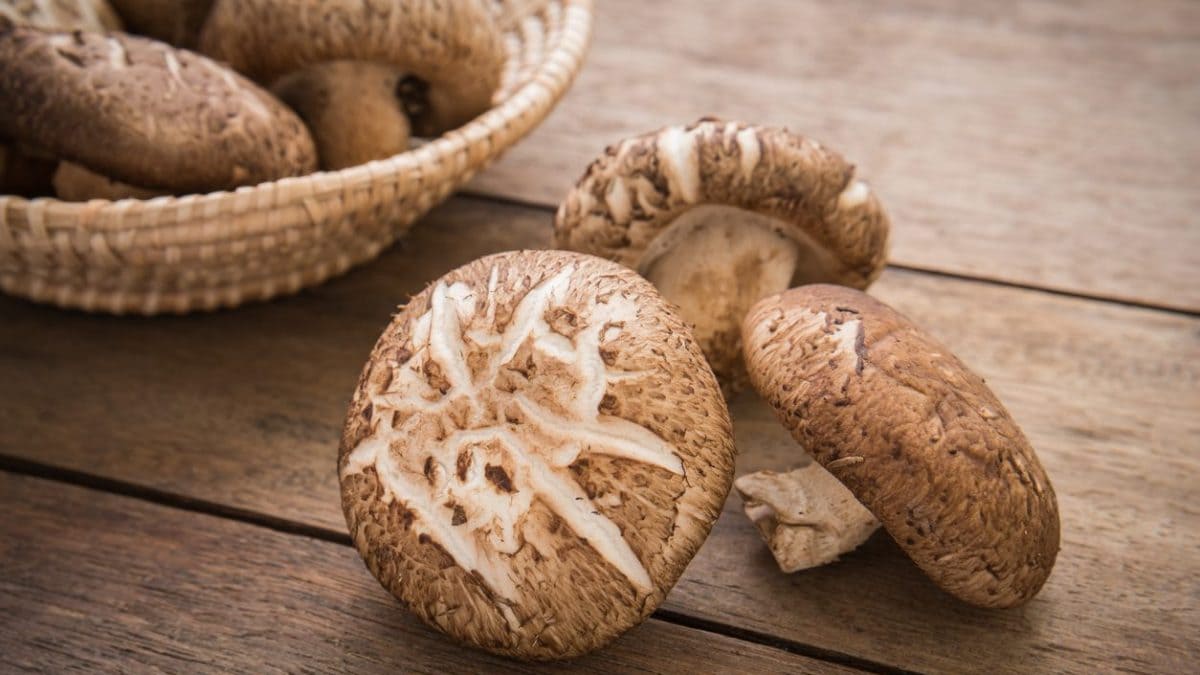
When it comes to edible mushrooms, there's a part of the world boasting an almost infinite variety, some of which have been used since ancient times for medicinal purposes even before their excellent organoleptic qualities were exploited. Asia, in fact, is one of the chosen homelands of mushrooms, particularly for their cultivation, which has also expanded abroad where possible. From shiitake to enoki, by way of the miraculous reishi, various types are now well-known (even as nutritional supplements): probably not so much as to compete with the delicious porcini mushrooms, but they do broaden the range of dishes to bring to the table in the autumn season. Let's get to know some Asian mushrooms, their benefits and culinary uses.
1. Shiitake (Lentinula Edodes)
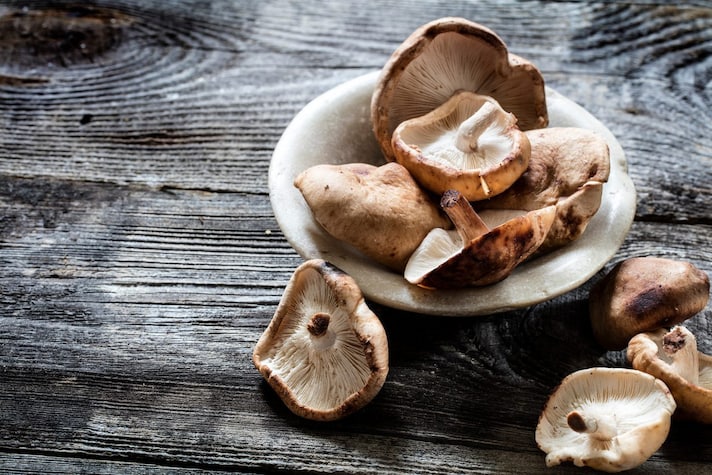
Shiitake is a mushroom native to East Asia, particularly China and Japan, which has gained great popularity, so much so that it is the second most cultivated mushroom in the world after champignon mushrooms. Its Japanese name derives from “shii”, which indicates the botanical variety of Castanopsis, trees where it grows on decaying cut stumps, and “take” which means “mushroom”. The cap of the shiitake is dark brown with lighter inserts. One of its strong points is its umami flavor, which combined with its meaty texture makes it perfect for consumption both fresh and dried. It is commonly used in Japanese soups such as miso, as the basic ingredient of dashi broth: it is therefore seen in noodle-based dishes and in Korean vegetarian stews, with tofu and kimchi. It is a mushroom known for its beneficial properties, also used for medicinal purposes: in addition to being low in calories, rich in vitamins and mineral salts, it contains all the essential amino acids and is an ally of the intestinal microbiota and the liver, with a purifying action.
2. Enoki (Flammulina Filiformis)
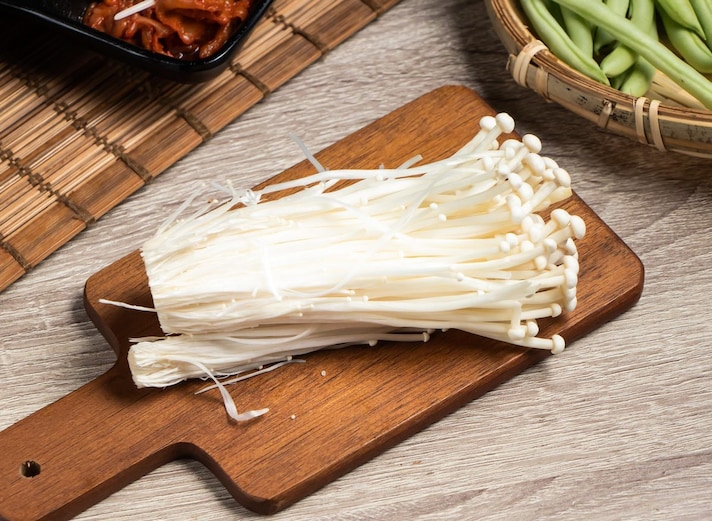
Enoki is a mushroom with an intriguing appearance: native to Japan, China, and Korea, it tolerates low temperatures very well. It's easily identifiable by its long, thin stem and button-like cap, both pure white or ivory in color, typical of these mushrooms when cultivated. They grow in bunches from a single base (which is how they're found commercially) and are best enjoyed fresh: they have a delicate yet distinctive flavor, somewhere between fruity and nutty, and are pleasantly crunchy. They can be cooked directly in broth, for example in sukiyaki, stir-fried in a wok with other vegetables, or used as a filling in classic Japanese rolls, which are lined with bacon or beef and pan-fried, making them ideal as a finger food. Enoki is low in calories and contains minerals, vitamins B and D, and antioxidants.
3. Judas' Ear (Auricularia Auricula-Judae)
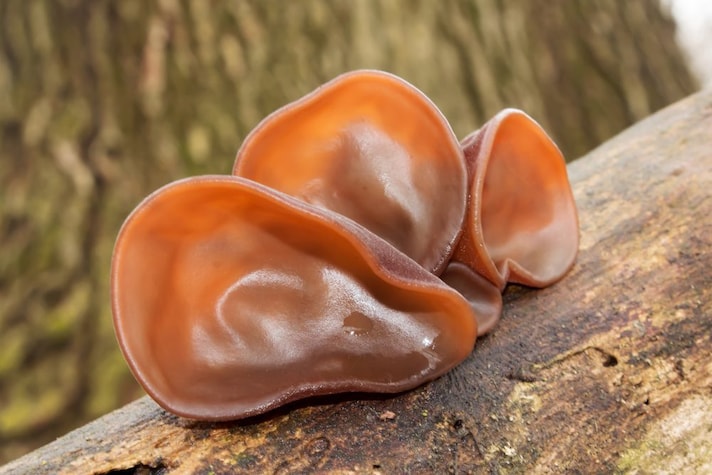
Known as wood ear or black mushrooms, these wood-dwelling fungi originate primarily from the subtropical forests of China. Their flattened shape and cartilaginous texture, somewhere between rubbery and crunchy, resemble a human ear (legend has it that it was the ear of the apostle who remained attached to the tree where he hanged himself). Their color varies from brown to black, especially when dehydrated and sold in bags. They have a generally neutral flavor and are widely used in Chinese and Vietnamese cuisine, adding a distinctive texture to soups and stir-fries. Wood ear is also used as a natural remedy, known for its anticoagulant properties and sold in herbalist shops in tablets or organic powder form for its relaxing effects.
4. Maitake (Grifola Frondosa)
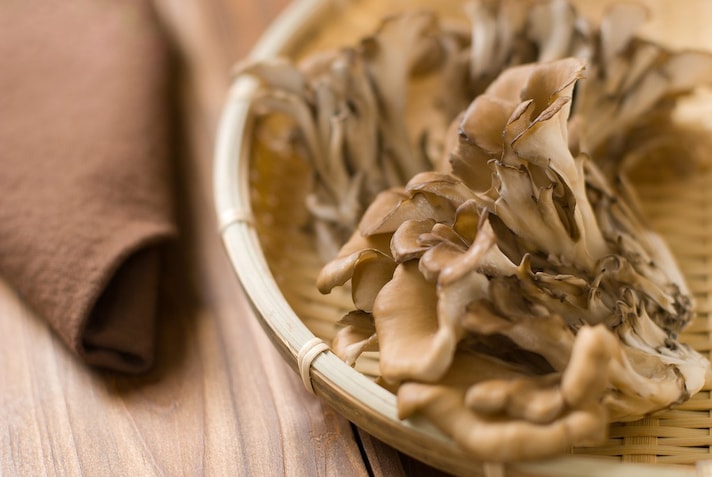
To be eaten when cooked, the maitake is another mushroom highly prized for its benefits, as well as being used in cooking. Its name in Japanese means “dancing mushroom” due to its appearance, which sees it at the base of trees in the form of wavy, grey-brown caps overlapping in a very choreographic way. It is an autumn variety that loves warm temperate climates: it is found especially in China and Japan, but also cultivated in the western United States, such as California. As a medicinal mushroom, it is an ally of health due to the presence of beta-glucans, which strengthen the immune system and maintain stable blood glucose and cholesterol levels: for this reason it is also purchased in pharmacies or herbalist shops as a food supplement. From the point of view of its use in cooking, it has an earthy flavor: it is usually browned in vegetable or rice dishes, or fried in tempura, because it becomes very scenic.
5. Nameko (Pholiota Nameko)
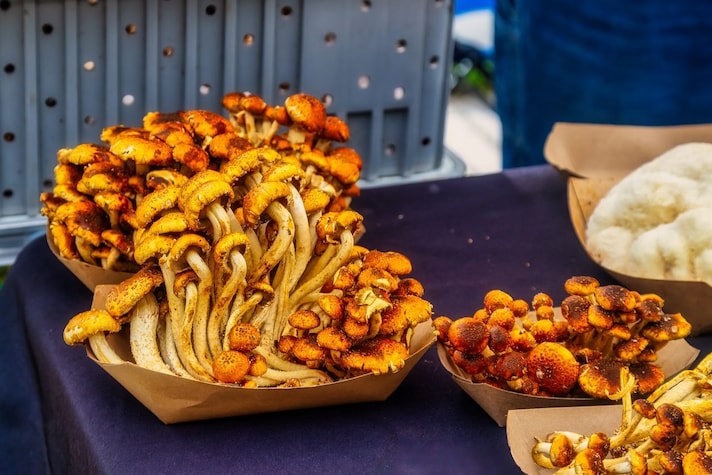
The nameko is a traditional Japanese mushroom, but it's also grown in other parts of East Asia: in China, it's called huázĭ mó. It's recognizable by its yellow-orange color and the slight viscosity that covers its cap, which persists even during cooking: it's perfect for miso soup, noodles, and nabemono-style one-pot dishes, with raw ingredients gradually cooked in the broth. It's also available pickled, and can even be prepared sautéed. Compared to a Western mushroom, it resembles a honey fungus or a pioppini mushroom.
6. Straw Mushrooms (Volvariella Volvacea)
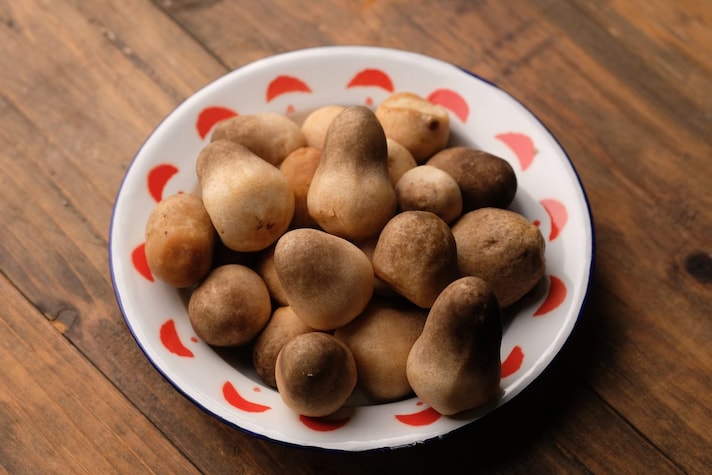
Straw mushrooms, also known as moss mushrooms, are native to the tropical and subtropical regions of Southeast Asia, particularly Thailand, Vietnam, and Cambodia, where they are grown at temperatures above 95°F/35°C. When young, they have a light gray-brownish cap that resembles a bell, and a white, cylindrical, and rather fleshy stem. Their flavor is reminiscent of turnips, slightly spicy. They can be sold fresh, but are more commonly purchased canned in oil or brine, or dried. They are a good source of iron, zinc, folic acid, and fiber.
7. Shimeji (Hypsizygus Marmoreus and Tessellatus)
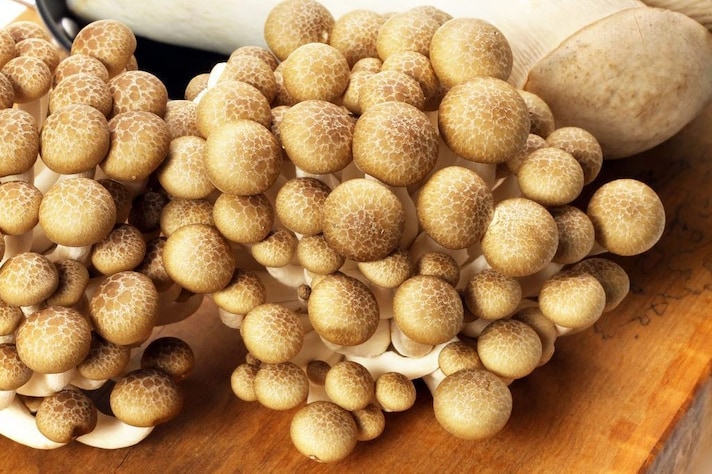
The term shimeji refers to a group of mushrooms belonging to the Hypsizygus genus, which includes the two best-known edible varieties: the Buna-shimeji, or brown beech mushroom, which has a brown cap with a surface crisscrossed by lighter veins, and the Bunapi-shimeji, or white beech mushroom, with a specially obtained candied color and a very delicate and sweet flavor. Both are native to Japan and China, where they are widely cultivated and are very versatile in the kitchen: they can be used in stir-fries with fish, meat, and vegetables, as well as in soups. After cooking, their texture remains firm, which makes them particularly popular.
8. Reishi (Ganoderma Lucidum)
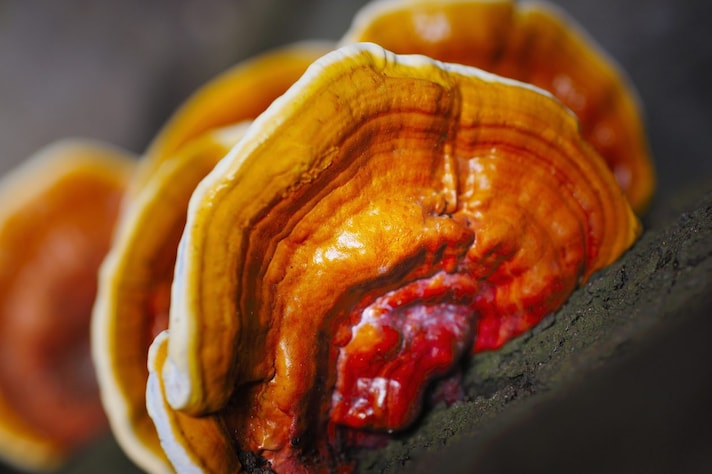
If there is one mushroom attributed with miraculous properties, it is Ganoderma lucidum, known as língzhī in China and reishi in Japan. But not only that: it is also called the "mushroom of immortality" or the "mushroom of emperors": its history has always been linked to that of traditional Chinese medicine. It grows mainly on broadleaf trees in humid forests; its cap is broad, flat, and reddish in color, always appearing shiny (hence the name). Unlike other mushrooms, it is not used for its flavor (which is bitter), but for its therapeutic properties. Reishi is consumed as an extract or powder in herbal teas and hot infusions, as it is known to be a powerful adaptogen, useful for strengthening the immune system and improving general well-being.
9. Matsutake (Tricholoma Matsutake)
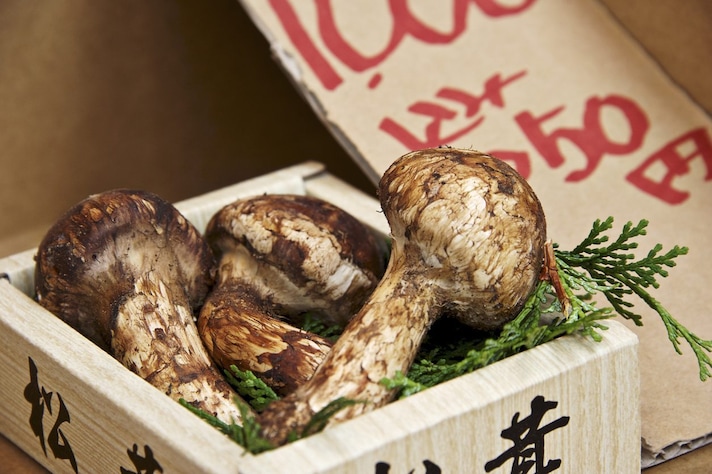
We conclude with one of the most expensive mushrooms in the world, if not the most expensive, as it can reach $1,000 per kilo: during the peak availability period, it "drops" to $100, but in 2023, news broke that three mushrooms weighing less than 200 grams were sold at auction for $6,871. Thus, we introduce the matsutake, an ancient mushroom that originates from Japan and which at first glance might look like a porcini mushroom, but due to its intense aroma and scarcity, it is more associated with a highly prized and rare black truffle. Who can afford it? Sometimes haute cuisine chefs, but always in extremely limited quantities: the mushroom cannot be cultivated; it grows spontaneously only in symbiosis with the local red pine, which, thanks to a parasite, has drastically reduced its numbers.
How to Cook Asian Mushrooms: Some Tasty Ideas
We've seen that Asian mushrooms can be cooked in many different ways, depending on their texture and flavor. One of the most popular techniques is to create tasty and elegant broths, thanks to their particular umami note: use them for homemade ramen and soups, which are less complicated than the originals but still impressive. They're also perfect as a filling for ravioli or in stir-fried dishes, where they're briefly sautéed with sesame oil, peanut oil, soy sauce, and garlic, maintaining a more or less crunchy texture depending on the variety: among our recipes, try gyoza and "yi-mein," or long-life noodles. Some also lend themselves to being sautéed in the traditional way, or fried. When dried, rehydrate them in warm water so they can be used in sauces and risottos.
;Resize,width=767;)
